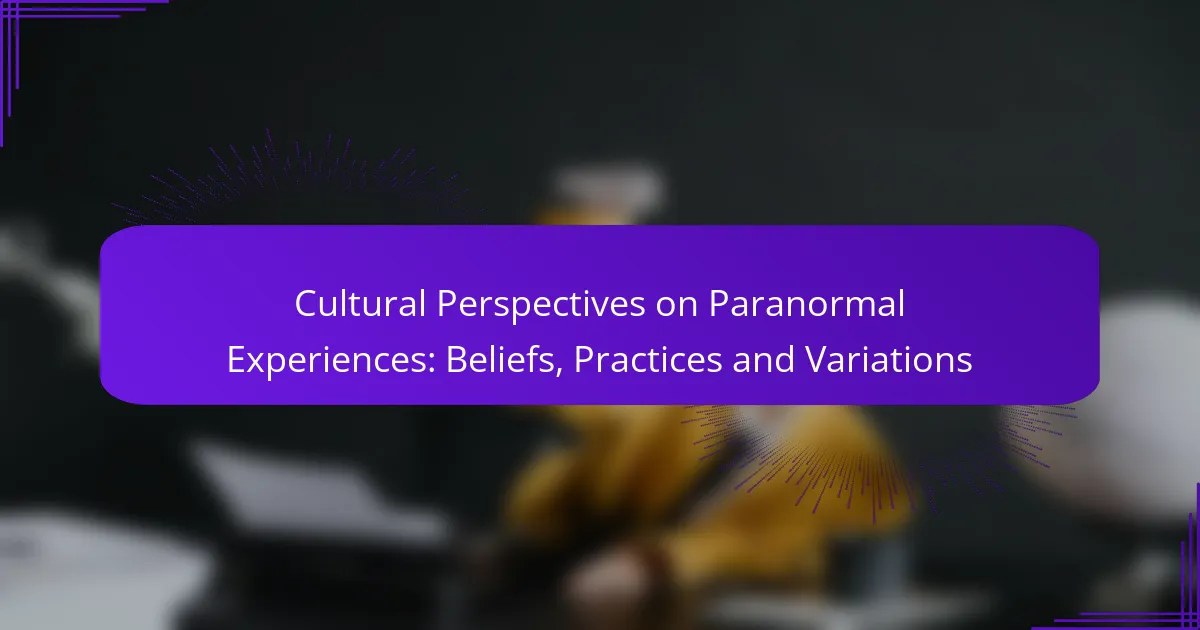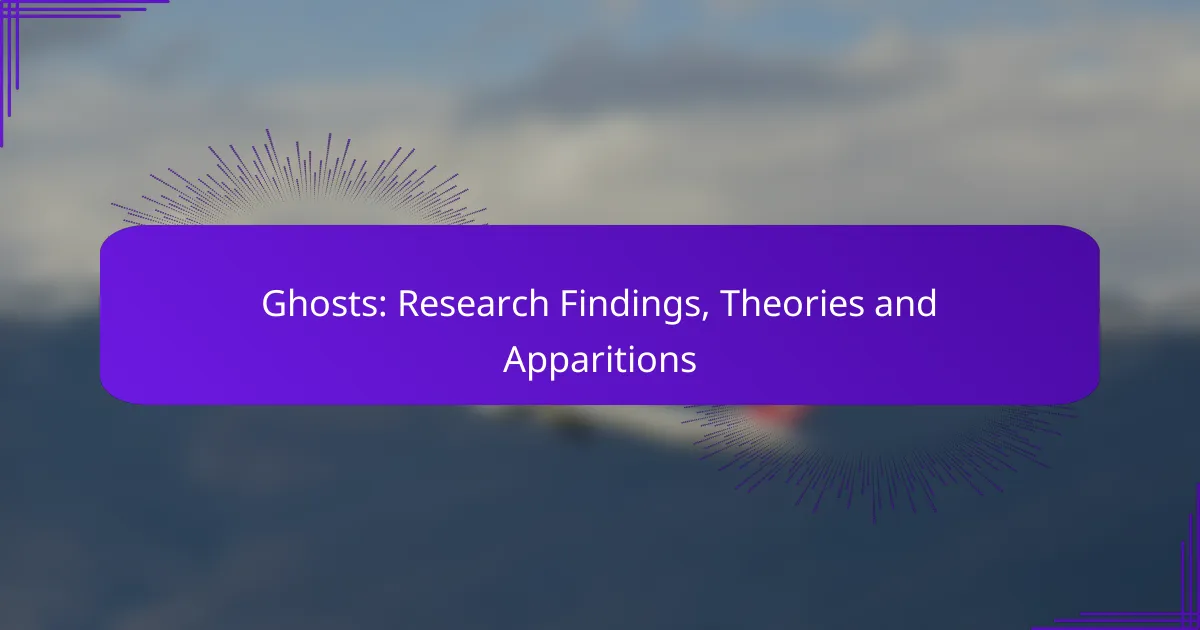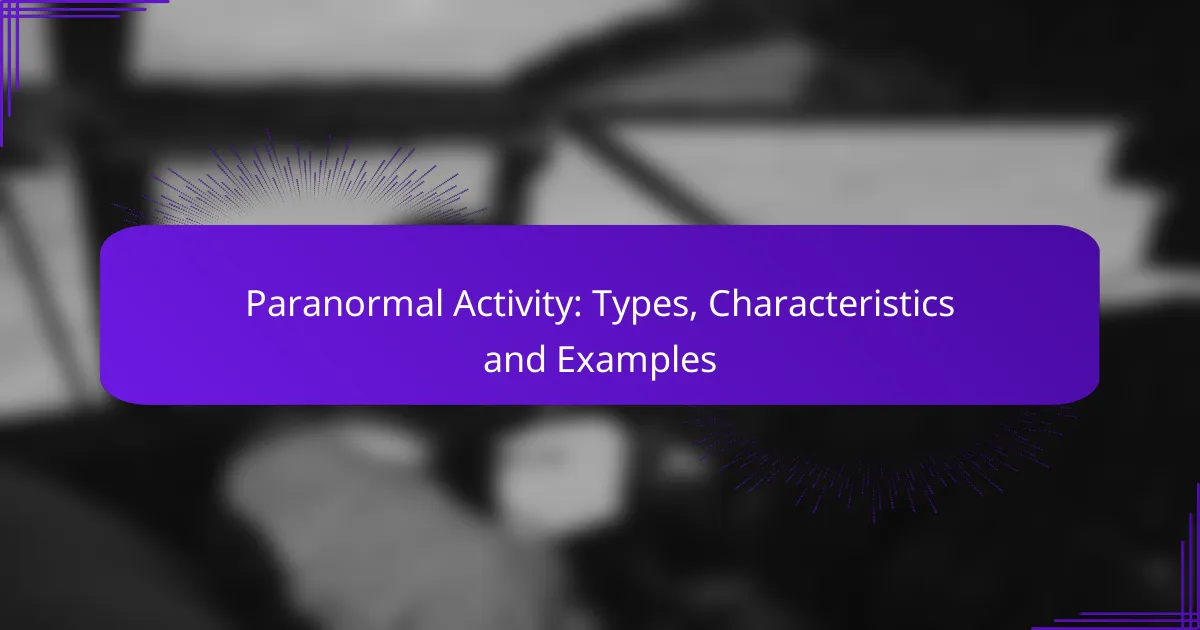Paranormal experiences are deeply intertwined with cultural beliefs, varying significantly across different societies. Influenced by historical, spiritual, and social factors, these beliefs shape individual interpretations of the unexplained and give rise to unique rituals and practices. As communities engage with the supernatural, they reflect their worldviews, seeking connections with the spiritual realm and addressing both personal and communal concerns.

What are cultural beliefs about paranormal experiences in North America?
Cultural beliefs about paranormal experiences in North America vary widely, influenced by historical, spiritual, and social factors. These beliefs shape how individuals interpret unexplained phenomena, often leading to distinct practices and traditions across different communities.
Native American spiritual practices
Native American cultures often view paranormal experiences as integral to their spiritual beliefs. Many tribes believe in the presence of spirits in nature, ancestors, and the afterlife, which can manifest through visions, dreams, or physical signs.
Rituals such as smudging, vision quests, and storytelling are common practices that help individuals connect with these spiritual realms. Each tribe has its unique customs, but the overarching theme is a deep respect for the unseen forces that influence their lives.
Christian interpretations of hauntings
In Christian communities, hauntings are frequently interpreted through the lens of sin, redemption, and the afterlife. Many believe that spirits of the deceased may linger due to unresolved issues or a need for closure, often leading to prayers or exorcisms to help these souls find peace.
Churches may conduct services to bless homes believed to be haunted, emphasizing the power of faith and divine intervention. This perspective often contrasts with secular views, which may attribute hauntings to psychological phenomena or environmental factors.
Popular ghost hunting traditions
Ghost hunting has gained popularity in North America, fueled by television shows and online communities. Enthusiasts often use tools like EMF meters, spirit boxes, and infrared cameras to capture evidence of paranormal activity.
Many ghost hunters conduct investigations in historical locations, believing that these sites hold significant spiritual energy. While some approach this as a serious endeavor, others see it as entertainment, leading to a wide range of beliefs about the validity of their findings.
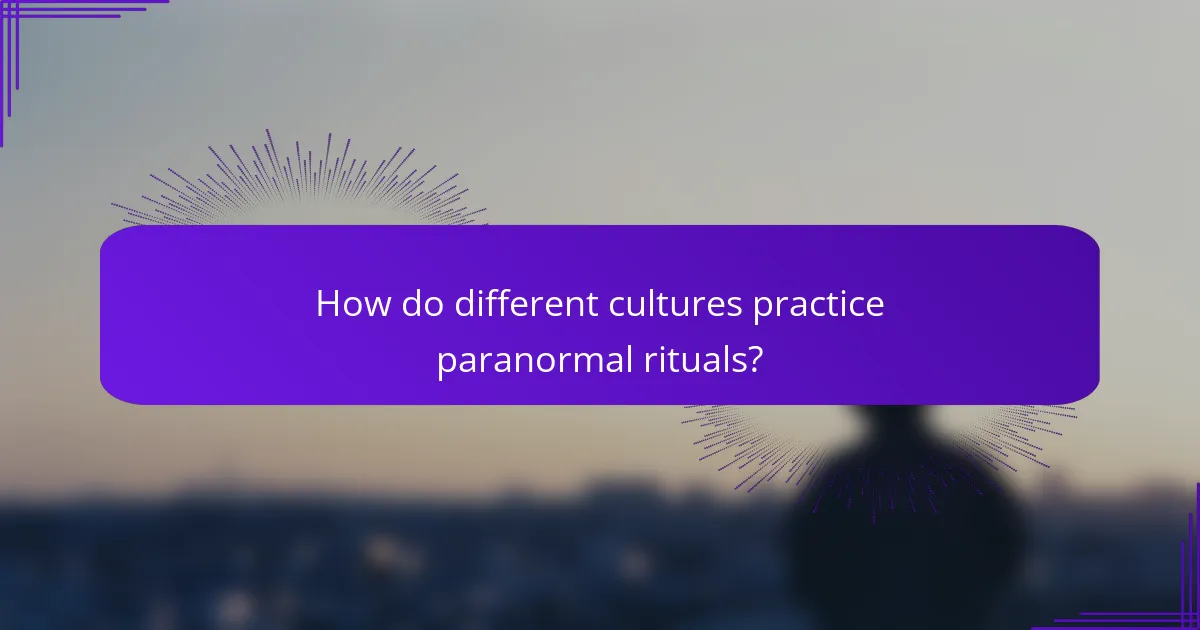
How do different cultures practice paranormal rituals?
Different cultures engage in paranormal rituals through distinct beliefs and practices that reflect their unique worldviews. These rituals often serve to connect individuals with the spiritual realm, seek guidance, or address personal and communal issues.
Voodoo practices in Haiti
Voodoo, or Vodou, is a rich spiritual tradition in Haiti that blends African, indigenous, and Catholic elements. Practitioners, known as Vodouists, often engage in rituals that involve music, dance, and offerings to spirits called Loa, who are believed to influence daily life.
Rituals may include ceremonies for healing, protection, or guidance, often held in temples or during community gatherings. Participants may use items like candles, herbs, and animal sacrifices, reflecting a deep respect for the spiritual world.
Shamanic rituals in South America
Shamanic practices in South America vary widely among indigenous groups but generally involve a shaman, or healer, who acts as a mediator between the physical and spiritual realms. These rituals often include the use of sacred plants, such as ayahuasca, to induce altered states of consciousness for healing or divination.
Common elements include drumming, chanting, and the invocation of spirits. Participants may seek insight into personal issues or community challenges, with the shaman guiding them through the experience to achieve clarity and healing.
Spiritualism in the United Kingdom
Spiritualism in the United Kingdom emerged in the 19th century, emphasizing communication with the spirits of the deceased. Spiritualists believe that the dead can provide guidance and comfort through mediums, who act as intermediaries during séances.
Practices often involve group gatherings where participants may experience messages from spirits, typically conveyed through clairvoyance or trance states. Spiritualist churches and organizations promote these practices, offering a structured approach to connecting with the spiritual realm.

What variations exist in paranormal experiences across cultures?
Paranormal experiences vary significantly across cultures, influenced by local beliefs, traditions, and historical contexts. These variations shape how communities perceive and interpret supernatural occurrences, leading to distinct practices and folklore.
Ghost sightings in Asian cultures
In many Asian cultures, ghost sightings are often linked to ancestral spirits. For instance, in Chinese tradition, it is believed that the spirits of ancestors may return to visit their living relatives, especially during festivals like Qingming. This cultural context fosters a sense of respect and reverence for the deceased.
Additionally, in Japan, the concept of “yurei” refers to restless spirits that have not found peace. These spirits are often depicted in folklore and are believed to manifest in specific locations, leading to ghost tours and local legends that attract both locals and tourists.
Folklore of fairies in European traditions
European traditions are rich with folklore surrounding fairies, often depicted as supernatural beings with magical powers. In Irish culture, for example, fairies are considered both benevolent and malevolent, leading to various customs aimed at appeasing them, such as leaving offerings or avoiding certain areas believed to be fairy dwellings.
In contrast, Scandinavian folklore presents a different perspective, where fairies, or “huldra,” are often associated with nature and fertility. These variations highlight the diverse interpretations of fairies across Europe, influencing local customs and storytelling.
Differences in afterlife beliefs
Afterlife beliefs vary widely, shaping how different cultures approach death and the supernatural. In many Western cultures, the concept of heaven and hell predominates, influencing rituals and mourning practices. This binary view often leads to a focus on salvation and the moral implications of one’s life choices.
Conversely, in many Indigenous cultures, the afterlife is viewed as a continuation of existence, where the deceased remain connected to the living. For example, in some African traditions, ancestors are believed to actively participate in the lives of their descendants, leading to practices that honor and communicate with them regularly.
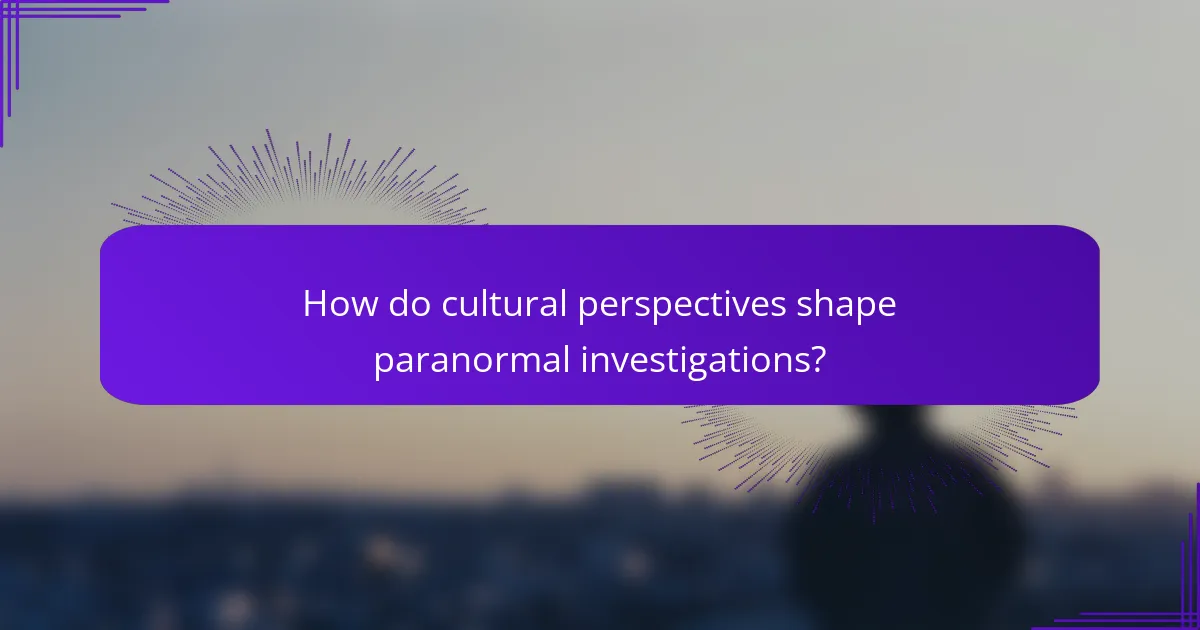
How do cultural perspectives shape paranormal investigations?
Cultural perspectives significantly influence paranormal investigations by shaping beliefs about the supernatural and guiding the methods used in these inquiries. Different cultures have unique interpretations of ghosts, spirits, and the afterlife, which directly affect how investigators approach their work and engage with local communities.
Influence of local beliefs on ghost tours
Local beliefs play a crucial role in shaping ghost tours, as they often reflect the history and folklore of a region. For instance, in places like New Orleans, tours may focus on voodoo practices and haunted locations tied to the city’s rich cultural heritage. In contrast, ghost tours in the UK might emphasize historical figures and events, showcasing the local legends that influence public perception of the paranormal.
These tours often adapt to the audience’s expectations, incorporating local myths and stories to enhance the experience. Investigators must be aware of these beliefs to connect authentically with participants and respect cultural sensitivities.
Variations in investigative methods
Investigative methods for exploring paranormal phenomena can vary widely based on cultural context. In some cultures, investigators may rely heavily on traditional rituals or spiritual practices, such as prayer or offerings, to communicate with spirits. In contrast, Western approaches might emphasize technological tools like EMF meters and audio recorders to capture evidence.
Understanding these variations is essential for investigators, as they can impact the effectiveness of their methods. For example, a culturally sensitive approach may involve blending traditional practices with modern technology, ensuring that investigations are respectful and relevant to the local beliefs.
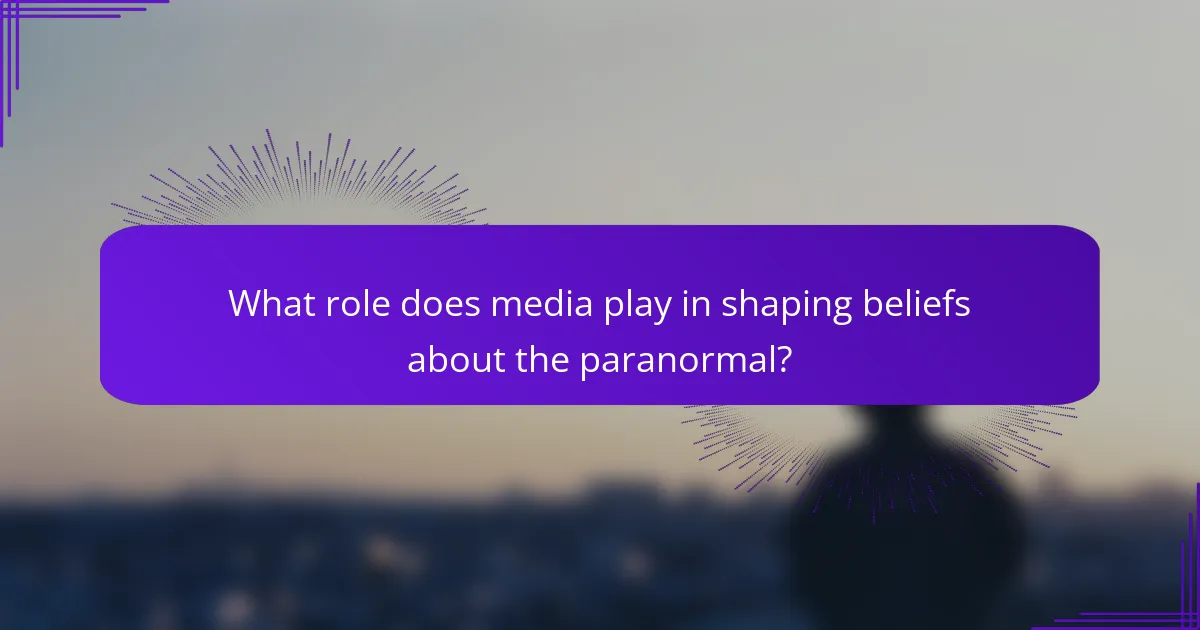
What role does media play in shaping beliefs about the paranormal?
Media significantly influences beliefs about the paranormal by presenting narratives that can either validate or challenge existing cultural views. Through various formats, such as television shows and documentaries, media shapes public perception and understanding of supernatural phenomena.
Impact of television shows on public perception
Television shows focused on the paranormal often dramatize experiences, which can lead to heightened interest and belief in supernatural occurrences. Programs like “Ghost Hunters” or “The X-Files” not only entertain but also create a framework for viewers to interpret their own experiences through a paranormal lens.
These shows can contribute to a phenomenon known as “media contagion,” where viewers begin to report similar experiences after being exposed to paranormal content. This effect can be particularly strong among younger audiences who are more impressionable and likely to engage with such narratives.
Documentaries exploring cultural beliefs
Documentaries that delve into cultural beliefs about the paranormal provide a more nuanced understanding of how different societies interpret supernatural events. By showcasing various practices, such as rituals or spiritual beliefs, these films highlight the diversity of perspectives on what constitutes the paranormal.
For instance, a documentary exploring shamanistic practices in indigenous cultures can reveal how these beliefs are deeply intertwined with community identity and healing. Such insights can challenge mainstream perceptions and encourage viewers to appreciate the complexity of cultural interpretations surrounding the paranormal.
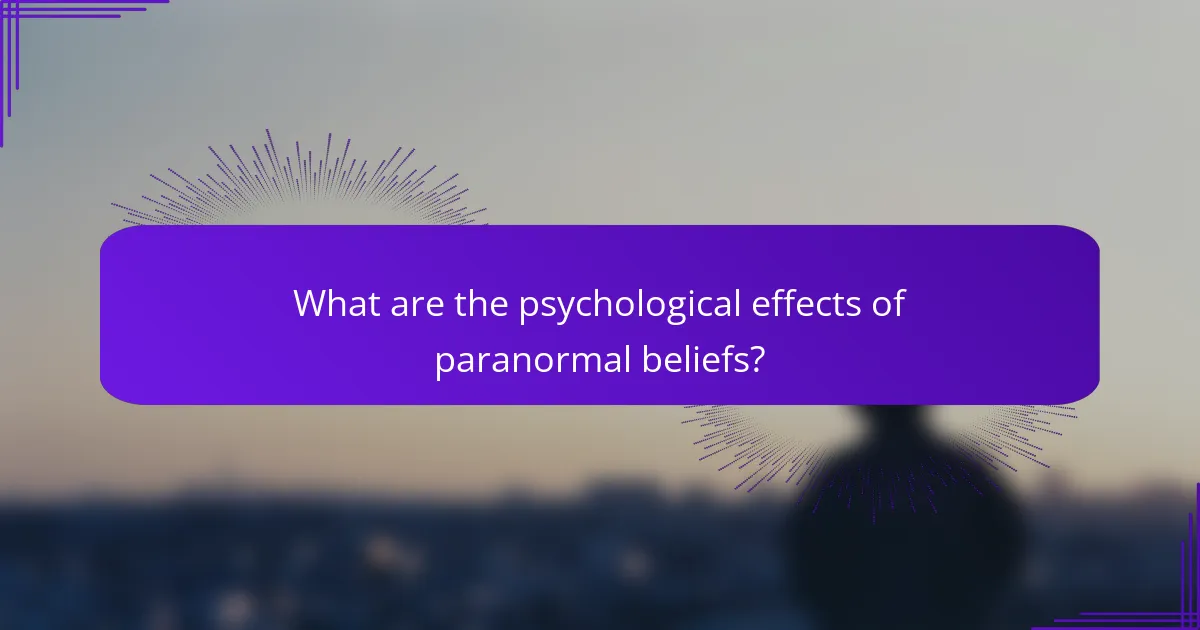
What are the psychological effects of paranormal beliefs?
Paranormal beliefs can significantly influence an individual’s psychological state, often leading to heightened fear, anxiety, or even comfort depending on the context. These beliefs shape how people perceive and interpret unexplained phenomena, impacting their mental well-being and daily lives.
Fear and anxiety related to hauntings
Fear and anxiety regarding hauntings are common psychological responses to paranormal beliefs. Individuals may experience heightened levels of stress when they believe their environment is haunted, leading to sleep disturbances, increased vigilance, and even social withdrawal.
People often report feelings of dread or paranoia in spaces they perceive as haunted, which can manifest in physical symptoms such as rapid heartbeat or sweating. These reactions can be exacerbated by cultural narratives surrounding ghosts and spirits, reinforcing the belief that certain locations are unsafe.
To manage fear related to hauntings, individuals can practice grounding techniques, such as mindfulness or rational analysis of their fears. Engaging in conversations about these beliefs with trusted friends or mental health professionals can also help alleviate anxiety and provide a more balanced perspective on paranormal experiences.
